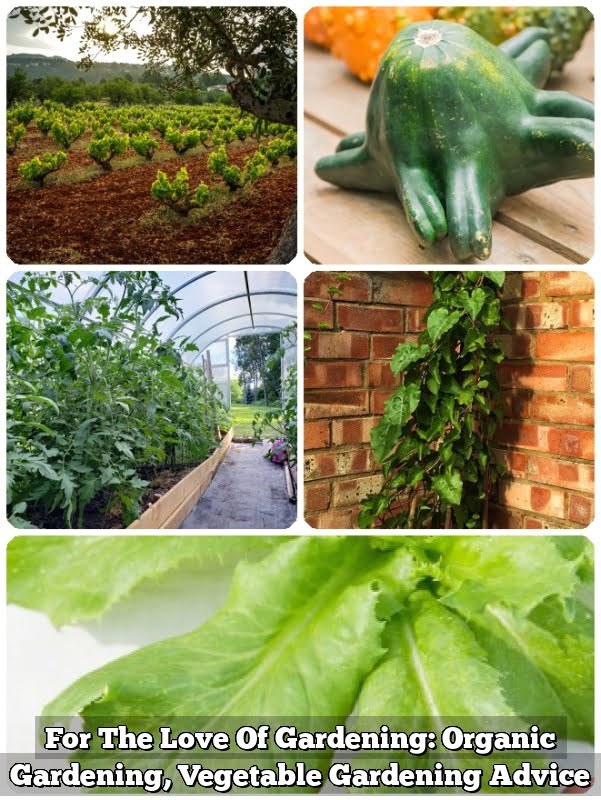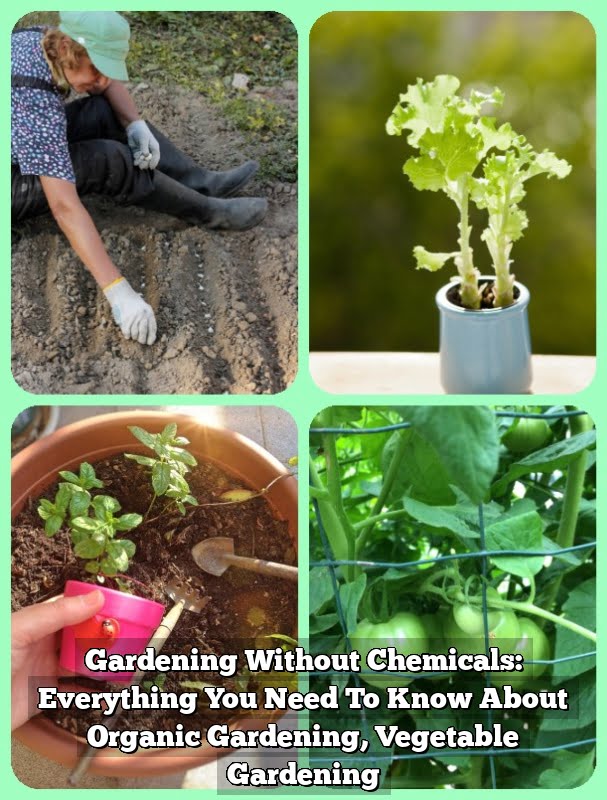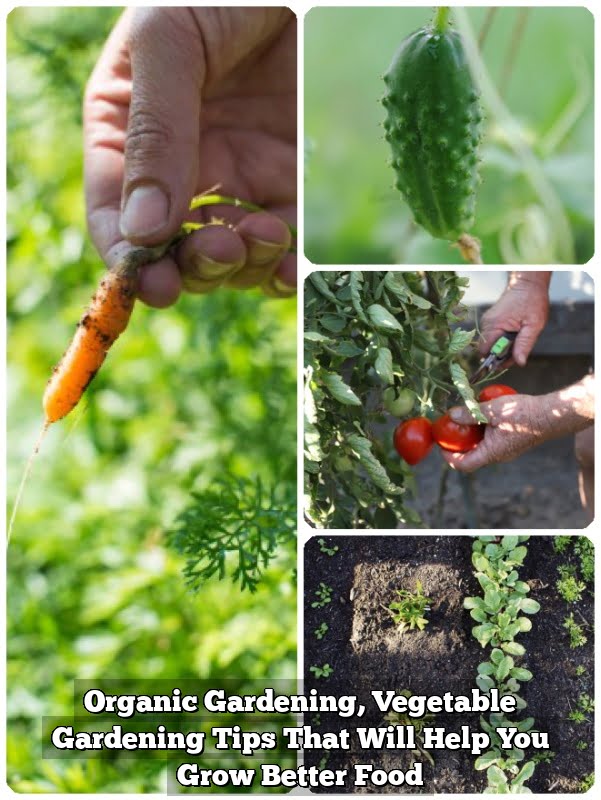Vegetable gardening on a bank offers a unique and rewarding experience for both seasoned gardeners and beginners alike. While it may pose some challenges, the benefits of gardening on a slope are well worth the time and effort invested. Not only does it allow for creative use of space, but it also provides an opportunity to enhance the visual appeal of your landscape while growing fresh and nutritious produce.
Gardening on a bank presents a set of special considerations that differ from traditional flat gardens. The incline of the slope can create drainage issues, erosion concerns, and make access more difficult. However, with proper planning and implementation, these challenges can be overcome and turned into advantages.
One advantage of gardening on a bank is improved air circulation which helps prevent diseases in plants. Additionally, the angle of the slope allows for better sunlight exposure throughout the day compared to flat gardens, maximizing photosynthesis for healthier growth. Whether you have limited yard space or simply want to add an interesting feature to your landscape, vegetable gardening on a bank can be a worthwhile endeavor that brings joy and delicious rewards.
Choosing the Right Vegetables for Bank Gardening
When it comes to vegetable gardening on a bank, choosing the right vegetables is crucial for success. The unique conditions of vertical gardening on a slope require plants that can thrive in these challenging environments. Here are some vegetable varieties that are well-suited for bank gardening:
- Root Vegetables: Root vegetables like carrots, radishes, and beets are excellent choices for bank gardening. Their deep root systems help stabilize the soil and prevent erosion. They also tolerate the well-drained nature of sloped gardens.
- Leafy Greens: Leafy greens such as lettuce, spinach, and Swiss chard are perfect for bank gardens. They grow quickly and their shallow root systems adapt well to vertical gardening conditions. Plus, they provide an abundant harvest of nutritious greens.
- Vining Plants: Vining plants like cucumbers, pole beans, and peas are great options for maximizing space in a bank garden. They can be trained to grow vertically using trellises or other support structures, making efficient use of limited garden space.
When selecting vegetables for your bank garden, consider factors such as sunlight exposure, soil erosion prevention, and moisture levels. Choose vegetables that thrive in full sun or partial shade depending on the orientation of your slope. Additionally, select plants that have good resistance to diseases and pests common in your area.
It’s important to note that proper care and maintenance play a significant role in the success of any vegetable garden on a bank. Regularly monitor water levels since sloped gardens can experience rapid drainage due to gravity’s effect on water flow. Proper watering techniques like drip irrigation or soaker hoses will ensure even moisture distribution throughout the slope.
Incorporating organic matter into the soil before planting will improve its fertility and structure while preventing erosion. Mulching around plantings will also help retain soil moisture and regulate temperature while reducing weed growth.
By carefully choosing suitable vegetables and providing proper care, you can create a thriving vegetable garden on a bank that yields a bountiful harvest year after year.
Preparing the Bank for Gardening
Techniques for Terracing, Building Retaining Walls, or Creating Raised Beds
When preparing a bank for gardening, one of the first steps is to create a level surface that will prevent the soil from eroding and provide stability for your plants. One technique you can use is terracing, which involves creating multiple flat platforms on the slope. This helps to slow down water runoff and prevents erosion.
Another approach is building retaining walls, which can be made from various materials such as timber, stone, or concrete blocks. Retaining walls not only provide support but also add an aesthetic element to your garden. Additionally, creating raised beds on the bank is an effective way to manage soil erosion and improve drainage while providing adequate growing space.
Improving Soil Quality and Preventing Erosion
Before you start planting on a bank, it’s crucial to improve the soil quality to ensure optimal growth for your vegetables. Begin by removing any rocks or debris from the area and loosen the soil using a garden fork or tiller. Adding organic matter like compost or well-rotted manure can help enrich the soil and provide essential nutrients for plant growth.
To prevent erosion on a bank, consider incorporating erosion control blankets or geotextiles into your gardening plans. These materials help stabilize the soil by reducing water runoff while allowing vegetation to grow through them.
Maintaining Drainage and Irrigation
Proper drainage is essential in preventing waterlogging and ensuring healthy plant growth on a bank garden. To promote good drainage, consider adding drainage pipes or gravel-filled trenches along the base of each terrace if you are terracing your slope. For raised beds, make sure they have enough drainage holes at the bottom to prevent water from pooling around the roots of your plants.
It’s also critical to establish an efficient irrigation system that delivers water directly to your plants’ root zones. Drip irrigation or soaker hoses are ideal options for bank gardening, as they prevent runoff and ensure that the water is being absorbed efficiently by the plants. Regularly monitor the moisture levels of your soil to avoid over or underwatering.
By following these techniques and considering proper drainage and soil improvement, you can prepare your bank for successful vegetable gardening. With a stable foundation in place, you’ll be ready to move on to planning and designing your bank garden.
Essential Tools and Materials for Bank Gardening
Choosing the right tools and materials is essential for successful bank gardening. Working on a slope can be challenging, so having the proper equipment will make the process easier and more efficient. Here is a comprehensive list of tools necessary for working on a slope:
- Digging Tools: A sturdy shovel and a digging fork are essential for preparing the soil on a bank. These tools help loosen compacted soil, remove rocks or debris, and create planting holes.
- Pruning Tools: Pruning shears or secateurs are necessary for maintaining and shaping plants in your bank garden. They can be used to trim branches, deadhead flowers, or prune back overgrown plants.
- Watering Tools: Watering on a slope can be tricky, so having the right watering tools is important. Consider investing in a long-handled watering wand or hose with adjustable nozzles to easily reach all parts of your bank garden.
- Garden Gloves: Protect your hands while gardening by wearing sturdy garden gloves. Look for gloves that provide good grip and flexibility for handling tools and working on uneven terrain.
- Erosion Control Materials: To prevent soil erosion on a bank, you may need erosion control materials such as netting or jute mats. These can be used to stabilize the soil until vegetation becomes established.
- Building Materials: If you choose to terrace or create raised beds on your bank, you will need suitable building materials such as bricks, stones, or timber. Make sure these materials are sturdy and can withstand the weight of the soil and plants.
Now that you have an idea of the essential tools and materials needed for bank gardening, it’s time to gather everything you need before starting your project. Having these items at hand will save you time and effort throughout the gardening process.
Remember to always prioritize safety while working on slopes – ensure stable footing, take breaks when needed, and use caution when handling sharp objects or heavy materials. With the right tools and materials, you’ll be well-prepared to tackle the challenges of gardening on a bank and create a thriving vegetable garden.
Planning and Designing Your Bank Garden
When it comes to vegetable gardening on a bank, careful planning and designing are key to ensuring a successful and visually appealing garden. Maximizing space and utilizing vertical growing techniques can help you make the most of your sloping terrain. Here are some tips for planning and designing your bank garden:
Assess the Sunlight
Before starting your bank garden, it is important to assess the sunlight exposure on different areas of the slope. Some parts may receive more shade than others due to nearby trees or structures. Choose vegetables that thrive in the amount of sunlight available in each area of your bank garden.
Utilize Terracing
Terracing is an effective technique for creating flat areas on a slope, allowing for easier planting and maintenance. It involves building multiple levels or steps into the slope, resembling a series of raised beds. Use materials such as timbers or stones to build retaining walls that separate each level. This not only adds structure but also prevents soil erosion.
Incorporate Raised Beds
In addition to terracing, consider incorporating raised beds into your bank garden design. Raised beds provide better drainage, prevent compaction, and allow for better control over soil quality. Build raised bed frames using materials like wood or plastic along each terrace level or at the base of the slope.
Maximize Space with Vertical Growing
Vertical gardening techniques can significantly increase your growing space on a bank. Install trellises, fences, or other supports along the slopes where climbing plants like beans, cucumbers, and peas can thrive and take advantage of vertical space.
Create Visual Appeal
Designing an aesthetically pleasing bank garden not only enhances its visual appeal but also makes it a focal point in your landscape. Consider adding curved or meandering pathways between different levels to create interest and make it more accessible. Plant colorful flowers or herbs around the edges of the garden for added beauty.
By carefully planning and designing your bank garden, you can create a functional and beautiful space that maximizes the potential of your sloping terrain. With proper assessment of sunlight, utilization of terracing and raised beds, incorporation of vertical growing techniques, and consideration of visual appeal, you will be well on your way to a successful vegetable garden on a bank.
Planting and Maintenance Tips for Successful Bank Gardening
When it comes to planting and maintaining a vegetable garden on a bank, there are some key considerations to keep in mind. Proper planning and care can ensure a successful and abundant harvest. Here are some essential tips to help you get started:
- Prepare the Soil: Before planting, it’s important to prepare the soil on your bank. Remove any existing vegetation or weeds, and loosen the soil with a garden fork or tiller. Consider adding organic matter such as compost or well-rotted manure to improve soil fertility.
- Planting Techniques: When planting seeds or transplants on a slope, it’s important to secure them properly to prevent erosion. Create small holes with your fingers or a dibber tool, ensuring that they are deep enough for the root system of your plants. Gently firm the soil around each plant to provide stability.
- Watering: Water is crucial for establishing young plants on a bank garden. Due to the slope, more frequent watering may be required compared to traditional flat gardens. Direct water carefully at the base of each plant to prevent runoff and wastage.
- Mulching: Mulching plays an important role in maintaining moisture levels in a bank garden while preventing weed growth and erosion. Apply a layer of organic mulch such as straw, wood chips, or shredded leaves around your plants, leaving space near their stems for air circulation.
- Fertilizing: Regular fertilization is necessary to provide nutrients to your plants. Consider using slow-release organic fertilizers or compost tea throughout the growing season. Avoid using high-nitrogen fertilizers that can promote excessive foliage growth and make plants more prone to wind damage.
- Weed Control: Weeds can be particularly problematic in a bank garden, as they can compete with your vegetables for water and nutrients. Regularly inspect your garden for weeds and remove them promptly to prevent them from taking over.
- Staking and Support: Due to the sloping nature of a bank garden, taller plants may require additional support to prevent them from toppling over. Use stakes, trellises, or cages to keep your plants upright and secure.
| Tip | Description |
|---|---|
| Prepare the Soil | Remove existing vegetation and add organic matter like compost. |
| Planting Techniques | Create deep holes for roots and firm soil gently around plants. |
| Watering | Water plants directly at the base to prevent runoff. |
| Mulching | Apply organic mulch to maintain moisture and prevent erosion. |
By following these planting and maintenance tips, you can ensure the success of your vegetable garden on a bank. With time and effort, you will be rewarded with a bountiful harvest of fresh and nutritious vegetables that you can enjoy with family and friends.
Dealing with Erosion and Soil Management in Bank Gardening
One of the key challenges in vegetable gardening on a bank is erosion control and soil management. Due to the slope of the bank, soil erosion can be a major issue, and it is important to implement strategies to prevent erosion and maintain soil fertility. In this section, we will discuss techniques for preventing erosion on a bank and strategies for managing the soil.
One effective technique for preventing erosion on a bank is to use ground cover plants. Ground cover plants help stabilize the soil by creating a protective layer that reduces water runoff and prevents rain from directly hitting the surface of the bank.
Some good ground cover options for vegetable gardening on a bank include creeping thyme, clover, or native grasses. These plants not only help prevent erosion but can also provide additional benefits such as attracting pollinators or adding nitrogen to the soil.
Another method for combating erosion is through mulching. By applying a layer of organic mulch, such as straw or wood chips, you can protect the soil from heavy rain or watering, reduce weed growth, and improve moisture retention. Mulch also helps regulate temperature fluctuations in the soil and encourages beneficial microbial activity.
In terms of soil management, it is important to regularly monitor and maintain soil fertility in a bank garden. To prevent nutrient depletion, consider incorporating organic matter like compost into the soil regularly. This will improve overall soil structure, water-holding capacity, and nutrient availability. Additionally, practicing crop rotation can help ensure that nutrients are replenished naturally over time.
By effectively dealing with erosion and implementing proper soil management techniques, you can create an ideal growing environment for your vegetables on a bank. In the next section, we will address common issues in bank gardening and provide solutions to help you overcome any challenges you may face.
| Erosion Prevention Techniques | Soil Management Strategies |
|---|---|
| Use ground cover plants like creeping thyme or clover to stabilize the soil and prevent erosion. | Add organic matter such as compost to improve soil structure and nutrient availability. |
| Mulch the surface of the bank with organic materials like straw or wood chips to protect against heavy rain, control weed growth, and retain moisture. | Practice crop rotation to naturally replenish nutrients in the soil. |
Troubleshooting Common Issues in Bank Gardening
When it comes to vegetable gardening on a bank, there are potential challenges that can arise. However, with the right knowledge and strategies, these issues can be overcome. In this section, we will address some common problems that gardeners may encounter when gardening on a bank and provide solutions to ensure a thriving vegetable garden.
One issue that may arise when gardening on a bank is poor drainage. Due to the slope of the land, water may not drain properly, leading to waterlogged soil and potentially causing root rot in vegetables. To overcome this problem, it is important to improve the drainage by creating drainage channels or raised beds with well-draining soil. Additionally, adding organic matter such as compost or vermiculite to the soil can help improve its structure and water-holding capacity.
Pests and diseases can also pose a challenge for bank gardening. Sloping terrain can make it easier for pests to access your vegetable plants. Slugs and snails are common culprits that thrive in moist conditions created by the slope. To combat these pests, consider placing copper tape or barriers around your garden beds to deter them from reaching your plants. Additionally, practicing good garden hygiene by removing any dead or diseased plant material can help prevent the spread of diseases.
By understanding these common issues and implementing appropriate solutions, you can troubleshoot problems effectively in your bank garden and ensure successful vegetable growth. With a little patience and perseverance, your hard work will pay off in bountiful harvests of fresh vegetables straight from your own bank garden.
Harvesting and Enjoying the Fruits of Your Labor
After all the hard work and dedication you put into your bank garden, it is time to reap the rewards of your labor. Harvesting fresh, homegrown vegetables is not only satisfying but also ensures that you are getting the most out of your efforts. In this section, we will discuss the joy of harvesting and provide you with some tips on storing, preserving, and cooking the delicious produce from your bank garden.
One of the greatest pleasures of vegetable gardening is being able to harvest food straight from your own backyard. When it comes to harvesting vegetables from a bank garden, timing is crucial. It is important to pick your crops when they are at their peak ripeness for optimal flavor and nutritional value.
For example, leafy greens such as lettuce and spinach should be harvested when they reach maturity but before they bolt and become bitter. On the other hand, root vegetables like carrots or potatoes can be left in the ground until ready to use.
Once you have harvested your vegetables, proper storage is essential to prolong their freshness. Some crops can be stored in a cool and dark place for an extended period, while others require immediate refrigeration. Leafy greens should be washed and dried thoroughly before storing them in airtight bags or containers in the refrigerator. Root vegetables can be stored in perforated plastic bags in a cool basement or cellar.
Preserving your harvest allows you to enjoy its bounty throughout the year. Canning, freezing, pickling, or drying are common methods used for food preservation. Consider making sauces or soups with excess tomatoes or peppers that can be frozen for later use. Herbs can also be dried and stored in jars for added flavor to your dishes during winter months.
Finally, let’s not forget about cooking. Freshly harvested vegetables bring amazing flavors and textures to any dish. From hearty salads with mixed greens and roasted vegetables to stir-fries packed with colorful produce, there are endless possibilities for creating healthy and delicious meals. Get creative with your recipes and experiment with different flavor combinations to make the most of your homegrown vegetables.
Conclusion
In conclusion, vegetable gardening on a bank may require some extra effort and planning, but the rewards are well worth it. Throughout this article, we have highlighted the benefits of gardening on a slope and provided tips for successfully growing vegetables in this unique setting.
By choosing the right vegetables, preparing the bank properly, using essential tools and materials, planning and designing your garden thoughtfully, and implementing effective planting and maintenance practices, you can overcome the challenges associated with gardening on a bank.
One of the main advantages of vegetable gardening on a bank is that it allows you to maximize space and utilize vertical growing techniques. This opens up opportunities for those with limited space or uneven terrain to still enjoy their own homegrown produce.
Additionally, by addressing erosion and soil management strategies, you can ensure the long-term health and productivity of your garden. Techniques such as terracing, retaining walls, raised beds, ground cover plants, mulching, and regular soil amendments will help prevent erosion and maintain soil fertility.
It is important to remember that starting a vegetable garden on a bank requires patience and perseverance. There may be some initial challenges along the way, such as drainage issues or pest problems. However, with careful planning and proactive measures to address these issues as they arise, you can troubleshoot any common problems that may come your way.
So why wait? Empower yourself today to start vegetable gardening on a bank. Not only will you experience the joy of harvesting fresh vegetables right from your backyard but also the satisfaction of knowing that you have nurtured something beautiful against all odds. Take action now by implementing the knowledge shared in this article and watch as your bank garden thrives with an abundance of delicious vegetables for seasons to come.
Frequently Asked Questions
What is the best ground cover for a bank?
The best ground cover for a bank largely depends on the specific conditions of the area, including climate, soil type, and slope steepness. However, one common and effective option is using plants that have dense root systems and excellent erosion control capabilities. Examples include creeping juniper, vinca minor, or English ivy.
These plants help stabilize the bank’s soil by preventing erosion while also providing aesthetic value with their foliage or flowers. Ultimately, selecting the best ground cover for a bank requires careful consideration of local conditions and consultation with gardening experts to ensure successful growth and erosion prevention.
How do you grow vegetables on a hillside?
Growing vegetables on a hillside presents unique challenges compared to traditional flat ground gardening. However, with some planning and adaptations, it is definitely possible to cultivate a bountiful vegetable garden on a hillside. First, it’s crucial to create terraces or raised beds to prevent soil erosion and provide level planting areas.
This can be done by building retaining walls or using other materials like timber or stones to separate each level properly. Additionally, incorporating organic matter into the soil helps improve fertility and drainage while ensuring proper moisture retention.
Is gardening worth it financially?
Gardening can bring significant financial benefits for those who are dedicated to it. While it may require initial investments in tools, equipment, seeds, or plants, maintaining a productive garden can ultimately save money on groceries throughout the year. Homegrown vegetables and herbs not only provide fresh produce but also cut down on grocery bills as you reduce your reliance on store-bought items.
Furthermore, gardening allows you to grow specialty crops that may be expensive or hard to find in stores at more affordable prices while offering opportunities for preserving surplus harvests through canning or freezing methods. Additionally, tending a beautiful garden can enhance property value if well-maintained landscaping increases curb appeal for potential buyers. Overall, while gardening may have upfront costs and require time investment, its financial rewards make it worthwhile for many people.

If you’re looking to get into vegetable gardening, or are just looking for some tips on how to make your current garden better, then you’ve come to the right place! My name is Ethel and I have been gardening for years. In this blog, I’m going to share with you some of my best tips on how to create a successful vegetable garden.





